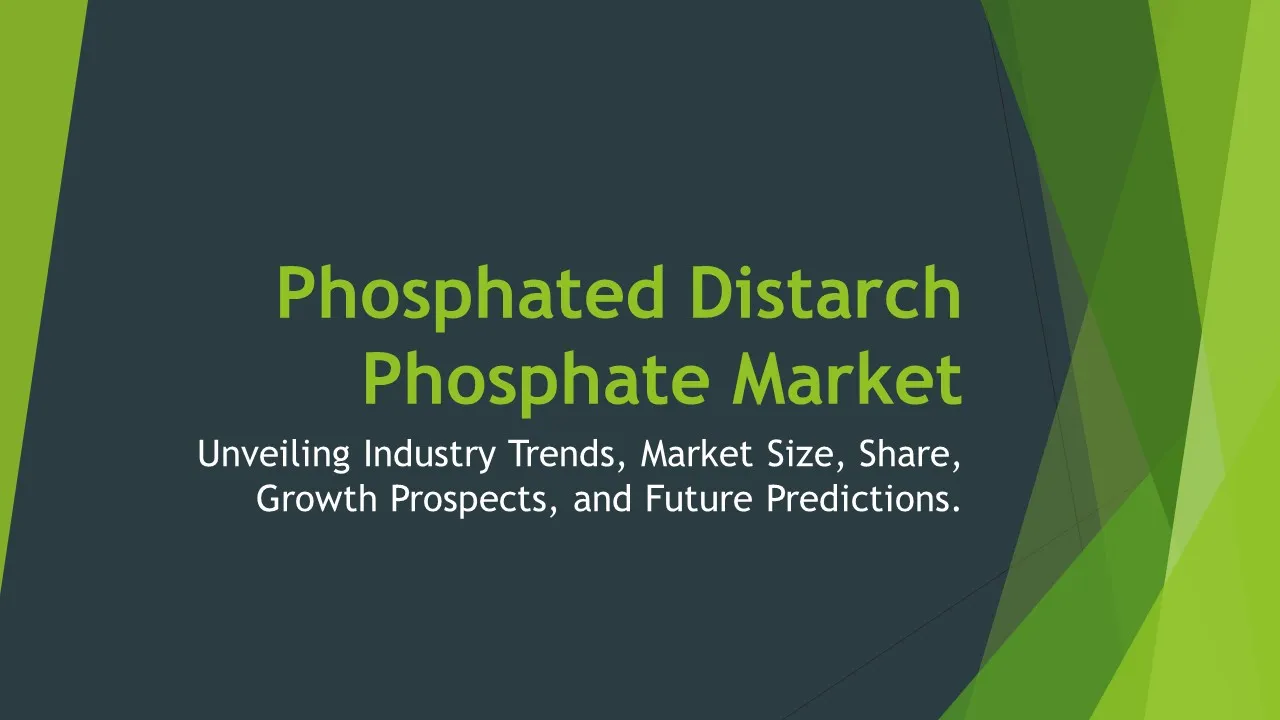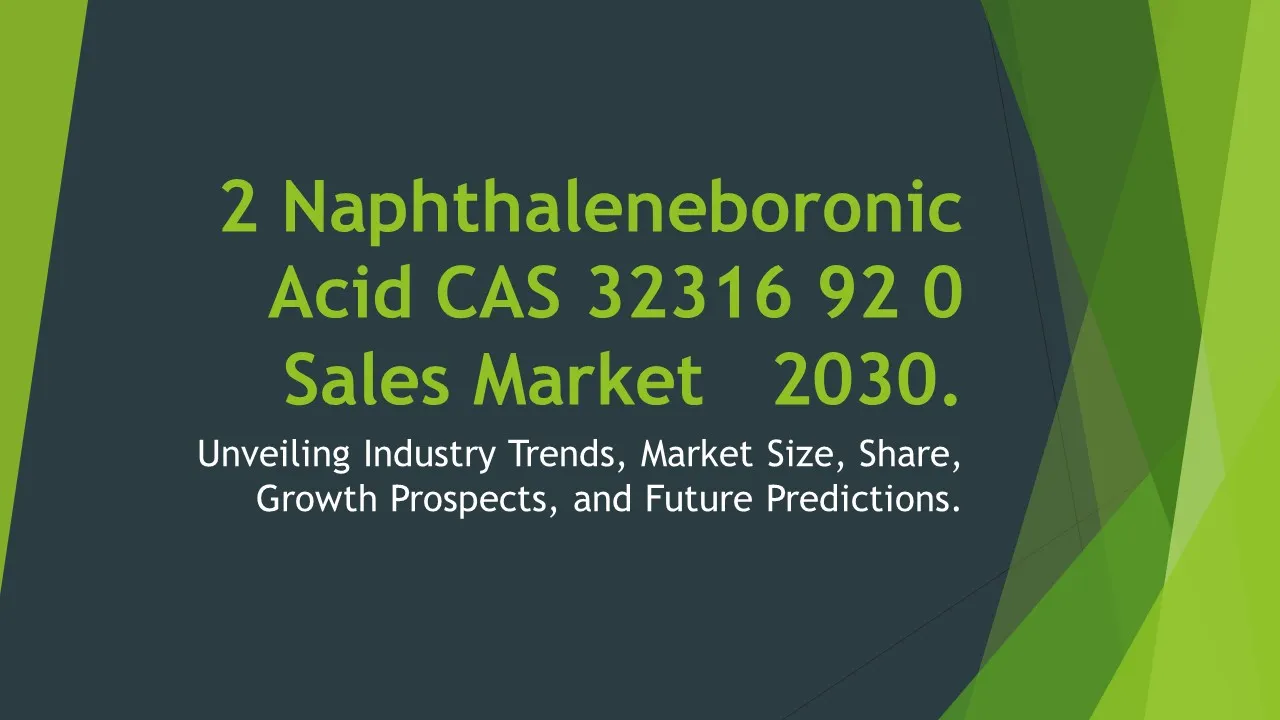EP AW Additives
EP AW Additives Market Segments - by Product Type (Anti-Wear Additives, Extreme Pressure Additives), Application (Automotive Lubricants, Industrial Lubricants, Metalworking Fluids), Distribution Channel (Direct Sales, Distributors), Ingredient Type (Phosphorus Compounds, Sulfur Compounds, Boron Compounds, Zinc Compounds, Molybdenum Compounds), and Region (North America, Europe, Asia Pacific, Latin America, Middle East & Africa) - Global Industry Analysis, Growth, Share, Size, Trends, and Forecast 2025-2035
- Report Preview
- Table Of Content
- Segments
- Methodology
EP AW Additives Market Outlook
The global EP AW (Extreme Pressure and Anti-Wear) additives market size was valued at approximately USD 2.5 billion in 2022 and is expected to reach USD 3.8 billion by 2035, with a compound annual growth rate (CAGR) of around 4.5% during the forecast period from 2025 to 2035. This growth can be attributed to the rising demand for lubricants in various end-use industries such as automotive, manufacturing, and energy. Additionally, the increasing adoption of advanced technologies in the automotive sector, particularly electric vehicles (EVs), has further fueled the need for high-performance lubricating solutions, thereby enhancing the market growth potential. The stringent regulations on emissions and environmental sustainability are also driving innovation in the formulation of EP AW additives that are both efficient and eco-friendly.
Growth Factor of the Market
Several factors are contributing to the consistent growth of the EP AW additives market. One of the primary drivers is the expansion of the automotive industry, which has seen an increased focus on improving fuel efficiency and reducing friction in engine components. As manufacturers strive to meet these objectives, the demand for high-quality lubricants containing EP AW additives has surged. Furthermore, the industrial sector’s continuous growth, particularly in manufacturing and heavy machinery, is further propelling the need for robust lubricant solutions that can withstand extreme pressure and offer superior wear protection. The increased awareness regarding equipment longevity and maintenance efficiency among industries is also leading to a higher uptake of specialized additives. Additionally, technological advancements in additive manufacturing and formulation chemistry are enabling the development of more effective and environmentally compliant EP AW additives. This is particularly important as companies are increasingly shifting towards sustainability in their operations.
Key Highlights of the Market
- The global EP AW additives market is projected to reach USD 3.8 billion by 2035.
- Automotive lubricants hold a significant share of the market owing to rising vehicle production.
- North America dominates the market, driven by a robust automotive and industrial sector.
- Phosphorus compounds are the most used ingredient type due to their effective anti-wear properties.
- The market is witnessing a trend towards eco-friendly and sustainable additives in response to regulatory pressures.
By Product Type
Anti-Wear Additives:
Anti-wear additives are crucial in providing essential protection to lubricated surfaces, minimizing wear and extending the lifespan of machinery. These additives function by forming a protective film on metal surfaces, reducing friction during operation. The growing automotive industry significantly drives the demand for anti-wear additives, as they are integral in automotive lubricants, ensuring engine efficiency and longevity. Moreover, advancements in formulation technologies have led to the development of synthetic anti-wear additives, which offer enhanced performance characteristics compared to traditional mineral-based products. As industries increasingly focus on reducing operational costs and improving equipment efficiency, the demand for high-performance anti-wear additives is expected to continue growing, positioning them as a critical segment in the EP AW additives market.
Extreme Pressure Additives:
Extreme pressure additives are specifically designed to protect machinery under high load conditions where traditional lubricants may fail. These additives create a protective barrier that can withstand high pressures and temperatures, thereby preventing metal-to-metal contact and reducing wear. The demand for extreme pressure additives is particularly strong in sectors involving heavy machinery, such as mining and construction, where extreme operating conditions are common. The increasing complexities of machinery and the rising need for reliable lubrication solutions in industrial processes are propelling the demand for extreme pressure additives. As manufacturers continue to optimize their operations and seek cost-effective solutions, this market segment is poised for significant growth, driven by both innovation and application advancements.
By Application
Automotive Lubricants:
The automotive lubricants segment is one of the most significant applications for EP AW additives due to the critical role lubricants play in engine performance and longevity. With the relentless pursuit of improved fuel efficiency and reduced emissions, automotive manufacturers are increasingly incorporating advanced additive technologies in their lubricants. The integration of EP AW additives in engine oils ensures that they can handle the extreme conditions encountered during operation, such as high temperatures and pressures. Furthermore, the growth in electric vehicles presents new opportunities for specialty lubricants, as these vehicles require highly efficient lubrication solutions for various components. As the automotive industry continues to evolve, the demand for high-quality lubricants that incorporate EP AW additives is expected to persist, driving growth in this application sector.
Industrial Lubricants:
Industrial lubricants, which are used across various manufacturing processes, machinery, and equipment, represent another vital application for EP AW additives. The need for high-performance lubricants in industrial settings is driven by the necessity for reducing downtime, minimizing equipment wear, and enhancing operational efficiencies. EP AW additives are crucial in achieving these goals, as they provide the necessary protection under high-load and extreme conditions. The continuous expansion of industries such as manufacturing, construction, and mining is projected to boost the demand for EP AW additives within industrial lubricants. As industries embrace automation and advanced manufacturing practices, the reliance on specialized lubricants with enhanced performance characteristics, including EP AW additives, is poised to grow significantly.
Metalworking Fluids:
Metalworking fluids (MWFs) are essential in various machining and manufacturing processes, where they serve functions such as cooling, lubrication, and chip removal. EP AW additives play a crucial role in MWFs by providing effective lubrication under high-pressure conditions, which is vital for ensuring the longevity of tools and equipment. The market for metalworking fluids is expanding due to increasing industrial activities and advancements in manufacturing technologies. As manufacturers adopt more sophisticated machining processes that generate higher heat and pressure, the demand for efficient metalworking fluids that incorporate EP AW additives will increase. This segment is expected to witness steady growth as industries prioritize productivity and equipment maintenance.
By Distribution Channel
Direct Sales:
Direct sales channels play a significant role in the distribution of EP AW additives, especially for large-scale manufacturers and corporate clients who prefer tailored solutions for their specific needs. By utilizing direct sales, companies can build strong relationships with their customers, ensuring that they understand and meet their unique requirements effectively. This channel also allows for better communication regarding product specifications, applications, and performance enhancements. The direct sales model is particularly advantageous for manufacturers of specialized additives, as they can provide technical support and guidance throughout the purchasing process. As the market grows, the importance of direct sales channels is expected to increase, reflecting a trend towards personalized service and customized solutions in the EP AW additives market.
Distributors:
Distributors are a vital component of the supply chain for EP AW additives, offering a broad reach to end-users across various industries. They serve as intermediaries between manufacturers and customers, providing essential logistical support and market insights that can enhance product delivery and availability. Distributors often carry a diverse range of products, allowing customers to access multiple options in one location. This convenience can prove advantageous, especially for smaller businesses that may not have the capacity to deal directly with multiple manufacturers. As the demand for EP AW additives continues to rise, distributors will play an increasingly crucial role in ensuring that products are available where and when they are needed, thus facilitating market growth.
By Ingredient Type
Phosphorus Compounds:
Phosphorus compounds are among the most widely used ingredients in EP AW additives due to their excellent anti-wear and extreme pressure properties. These compounds form protective layers on metal surfaces, effectively reducing friction and preventing wear during operation. The demand for phosphorus compounds is driven by their effectiveness in various applications, particularly in automotive and industrial lubricants. As industries prioritize performance and efficiency, the use of phosphorus-based additives is expected to grow, especially in environments requiring enhanced lubrication under extreme conditions. Regulations concerning phosphorus use are evolving, and manufacturers are focusing on creating more environmentally friendly alternatives, which may further drive innovation within this segment.
Sulfur Compounds:
Sulfur compounds are recognized for their unique properties that enhance the performance of lubricants in extreme pressure conditions. These additives serve as effective boundary lubricants, forming a protective film that prevents metal-to-metal contact in high-stress situations. The growing industrial sector, particularly in manufacturing and heavy machinery, is a significant contributor to the demand for sulfur-based EP AW additives. The ability of sulfur compounds to improve the lubricity of oils and greases while maintaining performance under extreme pressures makes them a preferred choice for many applications. As industries continue to evolve and face new operational challenges, the integration of sulfur compounds in lubricant formulations is projected to remain robust.
Boron Compounds:
Boron compounds are increasingly gaining attention in the formulation of EP AW additives due to their multifunctional properties that enhance lubricant performance. These compounds contribute to improved anti-wear and extreme pressure characteristics while also offering additional benefits such as corrosion protection and thermal stability. The growing need for high-performance lubricants in various industries, including automotive and industrial applications, is driving the adoption of boron-based additives. Furthermore, as manufacturers explore new formulations that balance performance with environmental impact, boron compounds are emerging as a viable option in the quest for sustainable lubricant solutions. The versatility of boron compounds is likely to support their continued usage and innovation within the EP AW additives market.
Zinc Compounds:
Zinc compounds, particularly zinc dialkyldithiophosphate (ZDDP), are traditional anti-wear additives that have been widely used in lubricants for decades. Their effectiveness in providing anti-wear protection and enhancing the overall performance of oils and greases makes them a staple in the formulation of EP AW additives. The continued reliance on zinc compounds is driven by their proven performance across various applications, especially in automotive lubricants where stringent performance standards are required. However, due to increasing regulatory scrutiny over zinc's environmental impact, there is a growing trend toward developing alternative additives that can deliver similar performance without the risks associated with zinc. Nevertheless, demand for zinc compounds remains strong as industries navigate the balance between performance and compliance.
Molybdenum Compounds:
Molybdenum compounds are recognized for their exceptional performance in harsh operating environments, particularly in high-load and high-temperature applications. These compounds contribute to reducing friction and wear, making them a valuable addition to EP AW additives. The automotive sector, alongside heavy industries, drives the demand for molybdenum-based lubricants, where performance and reliability are paramount. As manufacturers seek to optimize engine efficiency and reduce emissions, molybdenum compounds are becoming increasingly popular due to their ability to enhance lubricant properties significantly. The growing focus on sustainability and reducing environmental impacts will likely encourage the development of novel formulations that utilize molybdenum compounds effectively, supporting ongoing growth in this segment.
By Region
The regional analysis of the EP AW additives market reveals significant variations in market dynamics and growth rates across different areas. North America is currently the largest market for EP AW additives, driven primarily by the robust automotive and industrial sectors. In 2022, North America accounted for approximately 35% of the global market share, with a projected CAGR of 4.0% from 2025 to 2035. Major automotive manufacturers and OEMs in the United States contribute substantially to the demand for high-performance lubricants, which in turn drives the need for EP AW additives. Additionally, the region's emphasis on technological advancements and the adoption of innovative lubrication solutions fosters a favorable environment for market growth.
Europe also represents a significant market for EP AW additives, accounting for nearly 30% of the global share in 2022. The automotive industry, particularly in countries like Germany and France, plays a significant role in driving demand. Furthermore, the increasing focus on sustainability and compliance with regulatory standards encourages the development of eco-friendly additives, which is becoming a focal point in Europe. The Asia Pacific region is anticipated to exhibit the highest growth rate during the forecast period, fueled by rapid industrialization and rising automotive production, particularly in countries such as China and India. With a CAGR of approximately 5.5%, the Asia Pacific market is positioned for robust expansion, driven by increasing investments in manufacturing and infrastructure development.
Opportunities
The EP AW additives market is poised for a variety of opportunities driven by several key trends. One significant opportunity lies in the increasing focus on sustainability and environmental compliance. As industries face growing pressures to comply with stringent regulations regarding emissions and waste management, there is a rising demand for eco-friendly additives. Manufacturers who invest in research and development aimed at creating biobased and sustainable EP AW additives can position themselves as leaders in a rapidly evolving market. Furthermore, the ongoing shift towards electric vehicles presents a unique opportunity for innovation, as these vehicles require specialized lubricants that can operate efficiently under new mechanical conditions. Companies that can tailor their products to meet the needs of this emerging market segment may find substantial growth opportunities.
Moreover, the ongoing advancements in additive technology present a further opportunity for growth in the EP AW additives market. Research into novel formulations and the use of nanotechnology in lubricant manufacturing is paving the way for enhanced performance characteristics and longer-lasting products. Companies that leverage these innovations can create high-performance EP AW additives that meet the needs of modern machinery and equipment. Additionally, the increasing demand for high-performance lubricants in emerging markets, notably in Asia Pacific and Latin America, offers expansion opportunities for manufacturers looking to tap into new customer bases. As industries in these regions continue to expand, the demand for effective EP AW additives is likely to increase, promoting market growth.
Threats
Despite the promising growth prospects for the EP AW additives market, there are several threats that stakeholders must navigate. One major threat is the increasing regulatory scrutiny surrounding various chemical compounds used in lubricants, particularly phosphorus and zinc-based additives. As countries tighten regulations on environmental safety and chemical usage, manufacturers may face challenges in complying with new standards. This could lead to increased costs related to reformulation and compliance, potentially impacting profitability. Additionally, as consumers become more environmentally conscious, there is a growing demand for greener alternatives, which may create a competitive landscape for traditional EP AW additive producers who may lag in adapting to these trends.
Another significant threat is the volatility of raw material prices, which can significantly affect the overall production costs of EP AW additives. Fluctuations in the prices of key ingredient components due to market demand, geopolitical tensions, or supply chain disruptions can lead to challenges in maintaining stable profit margins. Manufacturers must remain agile and responsive to these market dynamics to avoid impacting their competitiveness. Furthermore, the emergence of alternative lubricating technologies, such as solid lubricants or advanced synthetic lubricants, poses a potential threat to traditional EP AW additives. As industries increasingly seek innovative solutions that offer enhanced performance and sustainability, manufacturers must continually innovate and adapt to remain relevant in a shifting market landscape.
Competitor Outlook
- Chevron Oronite Company LLC
- ExxonMobil Chemical Company
- BASF SE
- Fuchs Petrolub SE
- Royal Dutch Shell Plc
- TotalEnergies SE
- Lubrizol Corporation
- Innospec Inc.
- Afton Chemical Corporation
- Croda International Plc
- Clariant AG
- Evonik Industries AG
- Eastman Chemical Company
- Houghton International Inc.
- M-I SWACO
The competitive landscape of the EP AW additives market is characterized by a mix of well-established players and emerging companies, all vying for market share through innovation, product differentiation, and strategic partnerships. Major companies in the market have adopted various strategies to enhance their market presence, including mergers and acquisitions, collaborations, and investment in research and development. Companies such as Chevron Oronite and ExxonMobil Chemical are at the forefront, continuously innovating their product offerings to cater to the evolving needs of the automotive and industrial sectors. By focusing on high-performance and sustainable solutions, these companies are not only enhancing their brand reputation but also fortifying their competitive edge in a crowded marketplace.
BASF SE and Fuchs Petrolub SE are also notable players in the EP AW additives market, recognized for their extensive research capabilities and commitment to sustainability. These companies are investing heavily in the development of eco-friendly additives that comply with stringent environmental regulations while maintaining high performance. Their ability to innovate and adapt to changing market conditions positions them favorably in the competition. In addition, companies like Lubrizol Corporation and Afton Chemical Corporation are leveraging their strong distribution networks and customer relationships to expand their reach in emerging markets, where demand for high-quality EP AW additives is on the rise.
In conclusion, the EP AW additives market is poised for considerable growth, driven by various industry trends and the ongoing demand for high-performance lubricants. As competition intensifies, companies must remain vigilant in monitoring market dynamics, embracing innovation, and strategically aligning their product offerings to meet the demands of a diverse customer base. The successful players will be those that can effectively navigate the challenges while capitalizing on the opportunities presented by evolving consumer expectations and regulatory landscapes.
1 Appendix
- 1.1 List of Tables
- 1.2 List of Figures
2 Introduction
- 2.1 Market Definition
- 2.2 Scope of the Report
- 2.3 Study Assumptions
- 2.4 Base Currency & Forecast Periods
3 Market Dynamics
- 3.1 Market Growth Factors
- 3.2 Economic & Global Events
- 3.3 Innovation Trends
- 3.4 Supply Chain Analysis
4 Consumer Behavior
- 4.1 Market Trends
- 4.2 Pricing Analysis
- 4.3 Buyer Insights
5 Key Player Profiles
- 5.1 BASF SE
- 5.1.1 Business Overview
- 5.1.2 Products & Services
- 5.1.3 Financials
- 5.1.4 Recent Developments
- 5.1.5 SWOT Analysis
- 5.2 M-I SWACO
- 5.2.1 Business Overview
- 5.2.2 Products & Services
- 5.2.3 Financials
- 5.2.4 Recent Developments
- 5.2.5 SWOT Analysis
- 5.3 Clariant AG
- 5.3.1 Business Overview
- 5.3.2 Products & Services
- 5.3.3 Financials
- 5.3.4 Recent Developments
- 5.3.5 SWOT Analysis
- 5.4 Innospec Inc.
- 5.4.1 Business Overview
- 5.4.2 Products & Services
- 5.4.3 Financials
- 5.4.4 Recent Developments
- 5.4.5 SWOT Analysis
- 5.5 TotalEnergies SE
- 5.5.1 Business Overview
- 5.5.2 Products & Services
- 5.5.3 Financials
- 5.5.4 Recent Developments
- 5.5.5 SWOT Analysis
- 5.6 Fuchs Petrolub SE
- 5.6.1 Business Overview
- 5.6.2 Products & Services
- 5.6.3 Financials
- 5.6.4 Recent Developments
- 5.6.5 SWOT Analysis
- 5.7 Evonik Industries AG
- 5.7.1 Business Overview
- 5.7.2 Products & Services
- 5.7.3 Financials
- 5.7.4 Recent Developments
- 5.7.5 SWOT Analysis
- 5.8 Lubrizol Corporation
- 5.8.1 Business Overview
- 5.8.2 Products & Services
- 5.8.3 Financials
- 5.8.4 Recent Developments
- 5.8.5 SWOT Analysis
- 5.9 Royal Dutch Shell Plc
- 5.9.1 Business Overview
- 5.9.2 Products & Services
- 5.9.3 Financials
- 5.9.4 Recent Developments
- 5.9.5 SWOT Analysis
- 5.10 Croda International Plc
- 5.10.1 Business Overview
- 5.10.2 Products & Services
- 5.10.3 Financials
- 5.10.4 Recent Developments
- 5.10.5 SWOT Analysis
- 5.11 Eastman Chemical Company
- 5.11.1 Business Overview
- 5.11.2 Products & Services
- 5.11.3 Financials
- 5.11.4 Recent Developments
- 5.11.5 SWOT Analysis
- 5.12 Afton Chemical Corporation
- 5.12.1 Business Overview
- 5.12.2 Products & Services
- 5.12.3 Financials
- 5.12.4 Recent Developments
- 5.12.5 SWOT Analysis
- 5.13 Chevron Oronite Company LLC
- 5.13.1 Business Overview
- 5.13.2 Products & Services
- 5.13.3 Financials
- 5.13.4 Recent Developments
- 5.13.5 SWOT Analysis
- 5.14 ExxonMobil Chemical Company
- 5.14.1 Business Overview
- 5.14.2 Products & Services
- 5.14.3 Financials
- 5.14.4 Recent Developments
- 5.14.5 SWOT Analysis
- 5.15 Houghton International Inc.
- 5.15.1 Business Overview
- 5.15.2 Products & Services
- 5.15.3 Financials
- 5.15.4 Recent Developments
- 5.15.5 SWOT Analysis
- 5.1 BASF SE
6 Market Segmentation
- 6.1 EP AW Additives Market, By Application
- 6.1.1 Automotive Lubricants
- 6.1.2 Industrial Lubricants
- 6.1.3 Metalworking Fluids
- 6.2 EP AW Additives Market, By Product Type
- 6.2.1 Anti-Wear Additives
- 6.2.2 Extreme Pressure Additives
- 6.3 EP AW Additives Market, By Ingredient Type
- 6.3.1 Phosphorus Compounds
- 6.3.2 Sulfur Compounds
- 6.3.3 Boron Compounds
- 6.3.4 Zinc Compounds
- 6.3.5 Molybdenum Compounds
- 6.4 EP AW Additives Market, By Distribution Channel
- 6.4.1 Direct Sales
- 6.4.2 Distributors
- 6.1 EP AW Additives Market, By Application
7 Competitive Analysis
- 7.1 Key Player Comparison
- 7.2 Market Share Analysis
- 7.3 Investment Trends
- 7.4 SWOT Analysis
8 Research Methodology
- 8.1 Analysis Design
- 8.2 Research Phases
- 8.3 Study Timeline
9 Future Market Outlook
- 9.1 Growth Forecast
- 9.2 Market Evolution
10 Geographical Overview
- 10.1 Europe - Market Analysis
- 10.1.1 By Country
- 10.1.1.1 UK
- 10.1.1.2 France
- 10.1.1.3 Germany
- 10.1.1.4 Spain
- 10.1.1.5 Italy
- 10.1.1 By Country
- 10.2 Asia Pacific - Market Analysis
- 10.2.1 By Country
- 10.2.1.1 India
- 10.2.1.2 China
- 10.2.1.3 Japan
- 10.2.1.4 South Korea
- 10.2.1 By Country
- 10.3 Latin America - Market Analysis
- 10.3.1 By Country
- 10.3.1.1 Brazil
- 10.3.1.2 Argentina
- 10.3.1.3 Mexico
- 10.3.1 By Country
- 10.4 North America - Market Analysis
- 10.4.1 By Country
- 10.4.1.1 USA
- 10.4.1.2 Canada
- 10.4.1 By Country
- 10.5 EP AW Additives Market by Region
- 10.6 Middle East & Africa - Market Analysis
- 10.6.1 By Country
- 10.6.1.1 Middle East
- 10.6.1.2 Africa
- 10.6.1 By Country
- 10.1 Europe - Market Analysis
11 Global Economic Factors
- 11.1 Inflation Impact
- 11.2 Trade Policies
12 Technology & Innovation
- 12.1 Emerging Technologies
- 12.2 AI & Digital Trends
- 12.3 Patent Research
13 Investment & Market Growth
- 13.1 Funding Trends
- 13.2 Future Market Projections
14 Market Overview & Key Insights
- 14.1 Executive Summary
- 14.2 Key Trends
- 14.3 Market Challenges
- 14.4 Regulatory Landscape
Segments Analyzed in the Report
The global EP AW Additives market is categorized based on
By Product Type
- Anti-Wear Additives
- Extreme Pressure Additives
By Application
- Automotive Lubricants
- Industrial Lubricants
- Metalworking Fluids
By Distribution Channel
- Direct Sales
- Distributors
By Ingredient Type
- Phosphorus Compounds
- Sulfur Compounds
- Boron Compounds
- Zinc Compounds
- Molybdenum Compounds
By Region
- North America
- Europe
- Asia Pacific
- Latin America
- Middle East & Africa
Key Players
- Chevron Oronite Company LLC
- ExxonMobil Chemical Company
- BASF SE
- Fuchs Petrolub SE
- Royal Dutch Shell Plc
- TotalEnergies SE
- Lubrizol Corporation
- Innospec Inc.
- Afton Chemical Corporation
- Croda International Plc
- Clariant AG
- Evonik Industries AG
- Eastman Chemical Company
- Houghton International Inc.
- M-I SWACO
- Publish Date : Jan 20 ,2025
- Report ID : CH-8567
- No. Of Pages : 100
- Format : |
- Ratings : 4.5 (110 Reviews)









